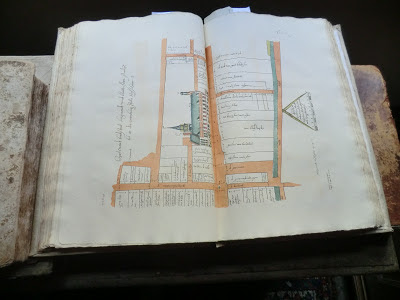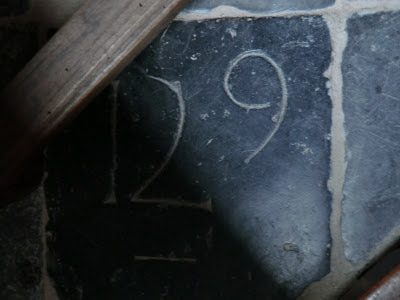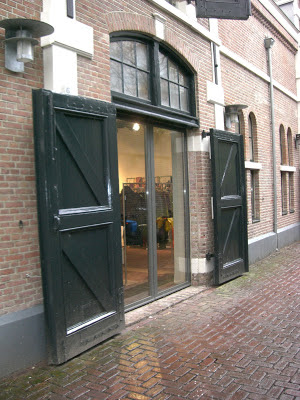 |
| Sign on the door of the Pilgrim Museum. |
 |
| The corner door is the entrance to the new room. The next door to the right is the Pilgrim Museum. |
 |
| Here I am seated at a table with books older than the United States. |
 |
| This is a plat book from the 1500s showing property owners in Leiden. |
 |
| This book contained a copy of the marriage record of Francis Cooke to Hester Mayieu in 1603. |
 |
| A jack screw was utilized to make repairs on the Mayflower. A jack screw was recently located and is displayed in the Museum. |
 |
| An identical bowl is found on the other side of the Atlantic Ocean at the Pilgrim Museum in Plymouth, Massachusetts. I will have to visit there as well. |
 |
| This is a bed. It's so small and short because people slept sitting up in the 1600s. |
 |
| People had to sleep sitting up because they burned peat for heat, which emitted lots of black smoke, making breathing difficult. |
 |
| The room next door was renovated, revealing a floor and fireplace from the 1400s. I am sitting in a chair from the 1200s. |
 |
| This floor is made of gravestones of priests buried at the church across the way. Burials and cemeteries are not popular in The Netherlands. |
 |
| This floor tile/former gravestone still displays a marking. |
 |
| We walked to nearby Levendaal, the street where Francis Cooke lived before sailing on the Mayflower. It is a short street with just a few structures standing on one side. |
 |
| The middle of Levendaal. |
 |
| The other end of Levendaal. |
 |
| The modern corner structure is a synagogue. |
 |
| This seems to be the oldest house left standing on Levendaal. It is not known which house Francis Cooke lived in, as houses were not numbered until the 1800s. |


















